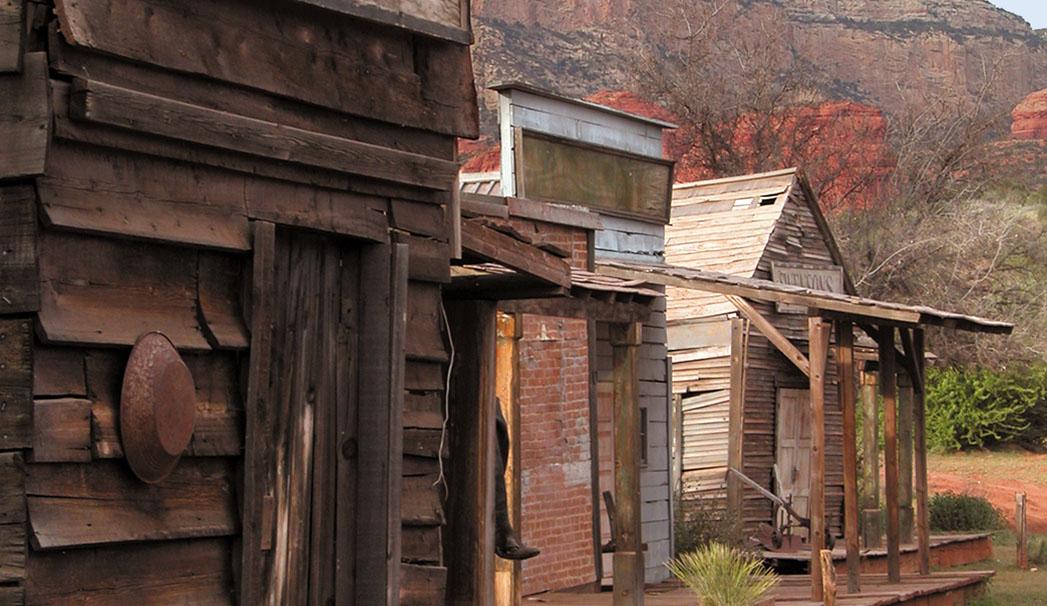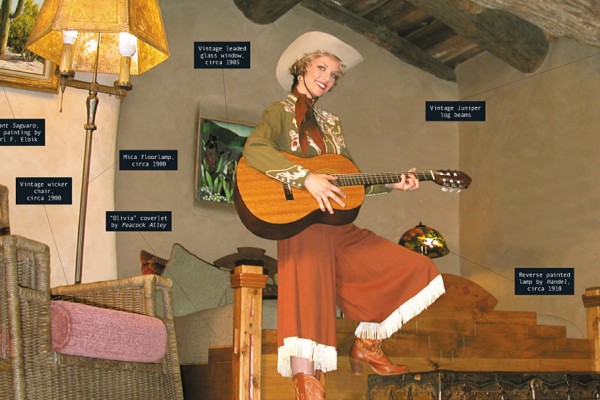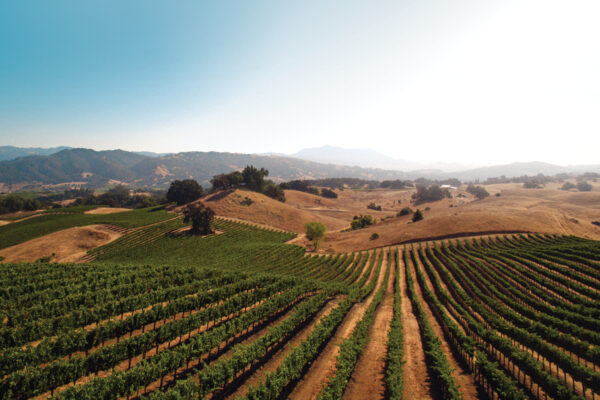The Bradshaw Ranch is padlocked now. In May 2003, it became another parcel of federal land, soon to blend into the rest of the Forest Service holdings surrounding it. But while the future of the land is uncertain, its past is one every Sedona movie fan should treasure. Since 1960, it has been a key location for movie, TV and commercial production in Sedona. Only days before the Forest Service took possession of the ranch, Sedona Monthly got an exclusive opportunity to take one last look around, preserving the images on film one more time, and giving us a chance to examine the Bradshaw Legacy in local movie history.
Located at the junction of Hartwell Canyon and Loy Canyon, in one of the most picturesque parts of the Sedona area, the landscape around the Ranch may look very familiar to anyone who’s spent time in front of a television over the last two generations, even if you can’t quite place where you’ve seen it before. And that may be because it’s been the setting for so many different projects and contexts that, identified or not, its beauty can’t help leaving an impression.
The Bradshaw connection to Sedona and the movies actually predates the Ranch, beginning in 1946. Bob Bradshaw first made his way to the Sedona area looking for relief from severe allergies, and he eventually settled in Oak Creek Canyon. Besides starting Sedona’s first local guided tour company, Western Movie Tours, and building and opening its first photo shop (still in business today as Rollies Camera Shop in Uptown), Bob worked as a carpenter. It was in that role that Bob made his first connection with the movies, doing construction work for the local production of Angel and the Badman, starring John Wayne. As Sedona’s natural scenery and wide-open spaces proved to be a magnet for Hollywood studios making westerns, Bob’s contacts led to more carpentry work and he gradually expanded his involvement to include stints as a wrangler and location coordinator.
The Bradshaw Ranch came into the picture in 1960, when Bob purchased the land. The property had been homesteaded since 1920 – an Adobe House from that period of the 20th century still stands on the grounds, and the Bradshaw family believes it to be the oldest surviving structure in Sedona. Its fate, which now rests with the Forest Service, was unknown at press time.
The first feature film to be shot at the Ranch was Stay Away, Joe in 1967. A Western town location, known as Bitter Creek, was built on the property in 1972, including complete buildings such as a sheriff’s office, a barber shop, a saloon and a general store. Because Bitter Creek was made up of real structures, filmmakers could shoot them from any angle, giving them much more flexibility than a set of painted storefronts. Veteran craftsmen worked on the buildings to give them an authentic aged feel, and some were built on rollers, so they could be shifted to suit a scene. It would have been a dream 20 years earlier, when westerns were being shot right and left. By the time Bitter Creek was complete, however, moviegoers’ habits were beginning to shift, and western movie production was feeling the pinch.
A newspaper article in 1973 quoted Bob noting that “It’s been slow on westerns lately, but it’s going to come back, there’s no reason why it shouldn’t. Westerns will sell forever.” Unfortunately, time has shown that to be overly optimistic. While elements of the movie western are permanent fixtures on the big screen – some people say westerns are still popular, it’s just that now they’re all set in outer space – the Old West setting, and cowboy and Indian conflicts, has year by year grown more difficult for a younger generation of moviegoers raised on high tech to relate to. While Bitter Creek arrived a little too late for features, the setting and the Ranch got plenty of use in commercials (Wrigley’s Big Red gum, Falstaff beer, Arm & Hammer Baking Soda, Golden Grahams cereal and Xerox among others), magazine photo shoots (Playboy, Elle, Mademoiselle), TV movies and specials, and music videos over the years. But Bitter Creek met its bitter end in 1986, when it was burned down for a Wells Fargo commercial.
In recent years, the Ranch became a focus of the Bradshaw family’s tour company; their “A Day in the West” program used it for horseback riding and as the location for “cowboy cookouts.” Bob’s son, John, will be continuing “A Day in the West” at a new location near Red Rock Crossing, including some of the memorabilia from the Ranch, such as props from Stay Away, Joe.
Want more Hollywood history? Go to www.arizonaslittlehollywood.com
MORE SEDONA MOVIE HISTORY: Johnny Depp in Dead Man, the making of Johnny Guitar, the return of actors Clint Walker, Edd “Kookie” Byrnes, Robert Horton, and Morgan Woodward, Sedona movie locations today, Oscar winner shooting spot, an interview with Tony Curtis, Sedona’s film legacy, an interview with Beatrice Welles




